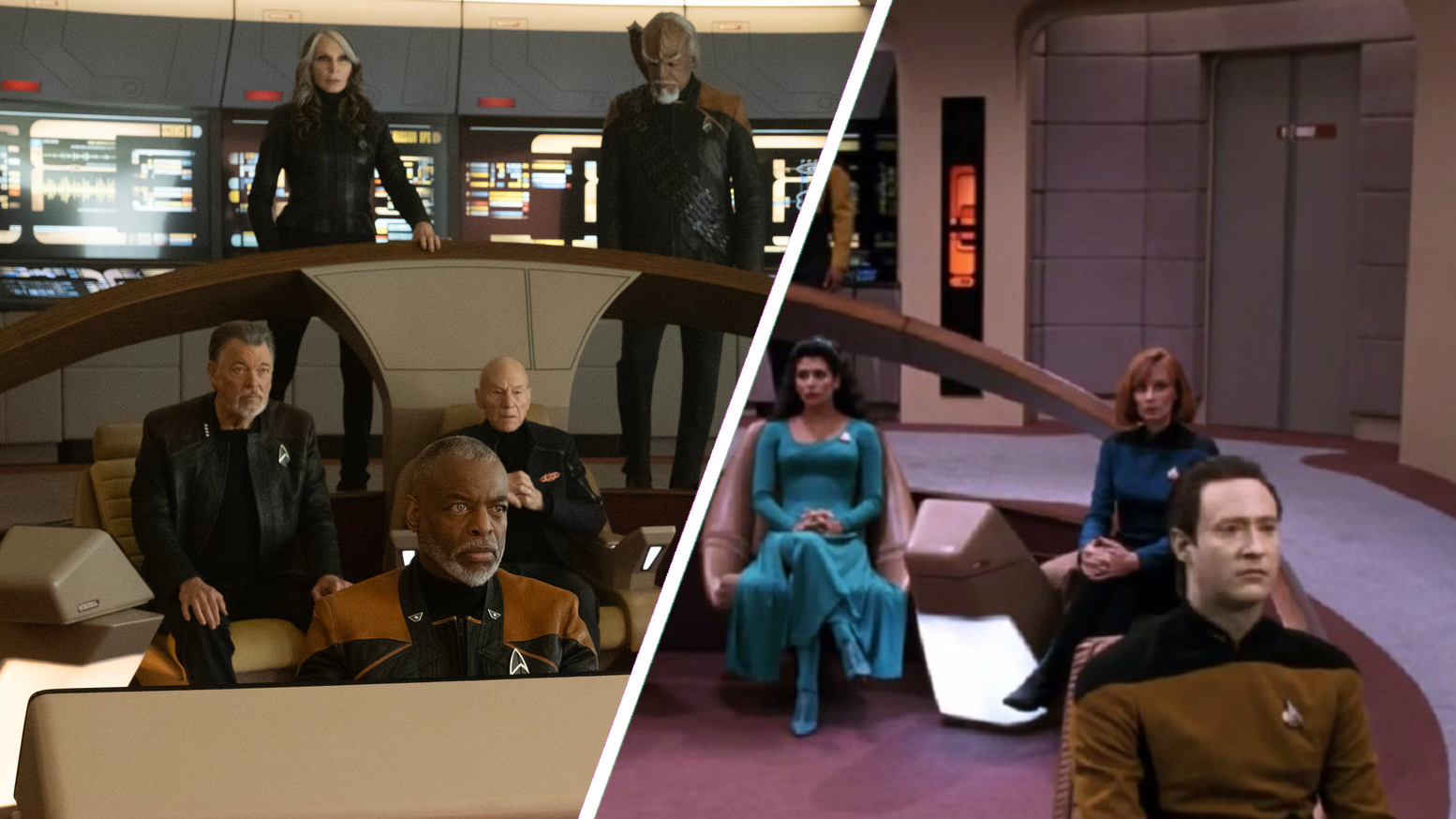Shared universes go back way further than Tony Stark, Steve Rogers and co sitting down for some post-Chitauri shawarma. Superheroes have been moonlighting in each other’s comic books for decades, while Cheers regulars frequently paid Frasier a visit in Seattle. It wasn’t until Marvel Studios launched the MCU (Marvel Cinematic Universe), however, that the concept started to gain serious mainstream traction.
By incorporating the contrasting adventures of Iron Man, Captain America, Thor and Black Widow into one gigantic, overarching narrative, Marvel successfully blended cinematic spectacle with the “must-watch-every-episode” ethos of serialised TV. The MCU’s famous end-credits stings also had the unexpected side-effect of convincing us all to stick around until the end of the closing titles of every movie, y’know, just in case.
From a business point of view it’s one of the shrewdest creative decisions ever made in Hollywood, a move that helped turn the MCU into the most lucrative franchise in history, while spawning an army of imitators. Some fell quickly by the wayside — Universal’s planned Dark Universe didn’t survive beyond its first release, “The Mummy” — while others (most notably DC’s original answer to the MCU) simply felt tired in comparison. But with apologies to box-office behemoths Marvel, Star Wars and the Monsterverse home of Godzilla and King Kong, the most exciting shared universe of them all is currently located somewhere on the final frontier.
It’s not quite “Infinite Diversity in Infinite Combinations” (sorry, Mr Spock), but “Star Trek“‘s guiding principle since “Discovery” brought the franchise back to TV in 2017 has been variety. “Discovery” started out as an “Original Series” prequel, before warping off to the even-more-distant future of the 32nd century. That left a gap in the timeline for the less serialized voyages of a pre-Kirk Enterprise in “Strange New Worlds“. “Picard” picked up the story of the ageing Jean-Luc Picard two decades after “The Next Generation” crew’s final voyage, while a pair of animated series — kids’ show “Prodigy” and all-out comedy “Lower Decks” — were given freedom to take the most daring swings in “Trek” history.
Throw upcoming spy adventure “Section 31” and cadet-themed “Disco” spin-off “Starfleet Academy” into the mix, and it’s clear that — beyond the obligatory warp drives, phasers and frequent violations of the Prime Directive — the main element unifying these very different series is their shared universe. Even their settings are far enough apart — geographically and chronologically — that there’s little danger of storylines colliding in Spacedock.
The contrast between the Alpha Quadrant and a certain galaxy far, far away is stark. Until “The Acolyte“, every canonical “Star Wars” movie and TV show had been set within a few generations of the Skywalker family tree. But even ignoring the limitations of that brief timeline, there’s a creeping homogeneity to much of the saga’s storytelling and dialogue.
Scenes from “The Acolyte” (set around a century before “The Phantom Menace”) feel interchangeable with moments in “Ahsoka” (several years after “Return of the Jedi”), while the powers-that-be at Skywalker Ranch seem more preoccupied with plugging holes in existing lore than telling stories for their own sake. What was the final episode of “The Acolyte” season one if not a prequel to the prequel trilogy?

“Star Wars” should be an exhilarating interstellar playground capable of supporting any story you can imagine, but it’s increasingly constrained by strict rules that must, it seems, never be broken. “Star Wars” is calling out for its own “Lower Decks”-style comedy”, while the upcoming “‘Goonies’ in space” “Skeleton Crew” could be the kid-oriented launchpad that Prodigy has been for “Trek”. “Star Wars” arguably needs both because right now, all that canon could easily feel daunting to anyone eager to take those precious first steps into a larger world.
Not that the current iterations of “Star Trek” deny the franchise’s rich past. The glorious final season of “Picard” was a nostalgia-fest from start to finish, bringing back familiar friends and foes to give the “TNG” crew the send-off they deserved — if it’s possible to replicate your cake and eat it, that season showed the way. “Prodigy” also goes big on the deep cuts, but crucially, it doesn’t matter if you have no idea that the name of the USS Voyager-A’s resident whale (Gillian) is a reference to “Star Trek IV”. Or that a mention of the “dysfunctional” crew of the Cerritos is a callback to “Lower Decks”. All of the in-jokes are simply window dressing holding the universe together, without excluding newcomers.

That’s the genius of the modern “Star Trek” universe, whose guiding lights clearly understand that expecting every viewer to be up-to-speed with the more than 900 episodes and 13 “Star Trek” movies in the back catalogue would be a surefire route to failure. The MCU and “Star Wars” lived charmed lives when they were built around a relatively small number of movies, but both franchises are now too vast and unwieldy to demand that even casual viewers become completists.
Nobody should have to watch everything, so surely it’s better for everyone if we accept that some people will set their targeting computers on “The Mandalorian” but avoid “Andor“, just as some “Discovery” fans can skip “Picard” without feeling they’re missing out.
Besides, we probably shouldn’t be surprised that it’s “Trek” leading the way, because this isn’t Starfleet’s first away mission to a shared universe. Back in the ’90s “The Next Generation”, “Deep Space Nine”, “Voyager”, four movies and even prequel series “Enterprise” shared characters and plotlines, to the extent that after hundreds of hours of TV, planet Earth was losing interest in shows that were becoming increasingly formulaic. Sound familiar? The franchise’s latest overseers have boldly taken note — now “Star Wars”, the MCU and the rest should follow in their warp trails.
“Discovery”, “Picard”, “Strange New Worlds” and “Lower Decks” are all available to stream on Paramount Plus, along with “The Original Series”, “The Next Generation”, “Deep Space Nine”, “Voyager” and “Enterprise”. “Prodigy” is available on Netflix.



